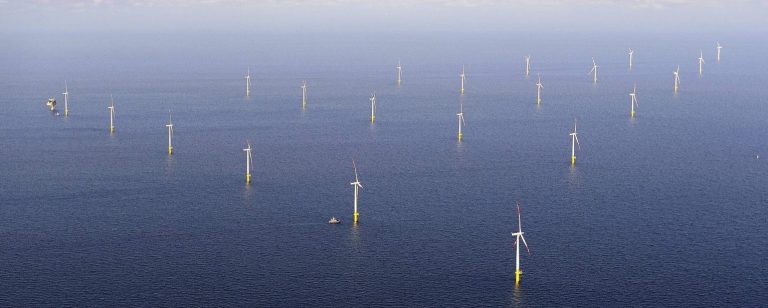Gemeinsam mit europäischen Partnern entwickelte das IKEM im Projekt Baltic InteGrid ein Konzept für ein Offshore-Stromnetz in der Ostsee.

Das Interreg Projekt Baltic InteGrid (Integrated Baltic Offshore Wind Electricity Grid Development) untersuchte die Möglichkeit eines vermaschten Offshore-Netzes („meshed grid“) in der Ostseeregion. Mit dem zunehmenden Aufbau von Windenergieanalgen in der Ostsee entsteht auch ein Bedarf nach zusätzlicher Infrastruktur für den Transport des erzeugten Stroms. In Baltic InteGrid sollte untersucht werden, wie ein solches Offshore-Stromnetz optimal gestaltet werden kann und welche Vorteile eine Verknüpfung der Stromnetze der Ostsee-Anrainerstaaten bieten könnte.
Sechs Forschungspakete befassten sich mit den Herausforderungen und Lösungen rund um ein vermaschtes Offshore-Netz. Unter anderem wurden die Bereiche Politik und Regulierung, Markt und Lieferketten sowie Technologie und Netzdesign betrachtet. Das Projekt vernetzte Stakeholder:Innen, politische Entscheidungsträger:innen, nationale Behörden und die Wissenschaft in Debatten und aktuellem Wissensaustausch.
Bei der Abschlusskonferenz im Februar 2019 wurde das im Projekt entwickelte Konzept für ein Offshore-Netz in der Ostseeregion und eine konkrete Projektvision für die nächsten Jahrzehnte (Baltic Offshore Grid 2050) vorgestellt und mit Teilnehmenden aus Wissenschaft, Politik und Industrie diskutiert. Aus Baltic InteGrid heraus entstand außerdem das Stakeholder-Netwerk Baltic Offshore Grid Forum für die weitere Kooperation im Bereich der Offshore Windenergie im Ostseeraum.
Pérez-Rúa, Juan-Andrés; Das, Kaushik; Cutululis, Nicolaos Antonio
15th IET international conference on AC and DC Power Transmission (5.-7.01.2019) 2019.
Wallasch, Anna-Kathrin; Borrmann, Rasmus; Künne, Tobias
2019.
Avdic, Dàmir Belltheus; Ståhl, Pierre
Final Report of the Baltic InteGrid project. 2019.
Bergaentzlé, Claire; Hoffrichter, Albert; Isojärvi, Pia; Marco, Federico; Martin, Bénédicte; Olsen, Birgitte Egelund; Pade, Lise-Lotte; Veinla, Hannes
Baltic InteGrid. 2019.
Hoffrichter, Albert; Beckers, Thorsten
2019.
anika.nicolaas-ponder@ikem.de
+49 (0)30 408 1870-15
Baltic InteGrid: Entwicklung eines integrierten Offshore-Windenergienetzes in der Ostsee
Förder-/Auftraggeber: Europäische Union
Förderprogramm: Interreg Baltic Sea Region
Projektpartner: Aalto University, Aarhus University, Coastal Research and Planning Institute, Deutsche WindGuard, Energy Agency for Southeast Sweden , Foundation for Sustainable Energy, Insitut für Klimaschutz, Energie und Mobilität , Latvian Association of Local and Regional Governments, Lund University, Maritime Institute in Gdansk, Rostock Business and Technology Development, Stiftung Offshore-Windenergie, Technical University of Denmark, University of Tartu
Laufzeit: 01/2016–06/2019